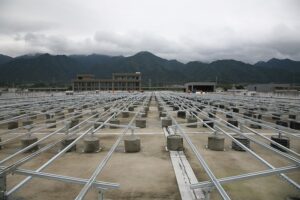
Building a Greener Future: The Economics of Clean Energy
As the world faces the harsh realities of climate change, pollution, and dwindling fossil fuel reserves, the transition to clean energy has become not only a necessity but also an opportunity for economic growth. The intersection of environmental sustainability and economic viability is paving the way for a greener future. This article explores the intricacies of clean energy economics, its implications for businesses, governments, and society, and the innovative technologies reshaping our energy landscape.
The Current Energy Landscape
For centuries, the global economy has relied heavily on fossil fuels such as coal, oil, and natural gas. These energy sources have powered industries, generated electricity, and fueled transportation. However, the consequences of fossil fuel consumption—rising greenhouse gas emissions, air pollution, and resource depletion—are now widely acknowledged. The urgent call for a transition to cleaner alternatives has sparked immense interest and investment in renewable energy sources like solar, wind, hydroelectric, and geothermal power.
Understanding Clean Energy Economics
At its core, clean energy economics examines the production, distribution, and consumption of renewable energy in conjunction with traditional economic principles. It encompasses market dynamics, investment potential, job creation, and cost-effectiveness of clean energy technologies. Unlike conventional energy sources, which are susceptible to price volatility due to geopolitical tensions and supply chain disruptions, renewable energy offers a more stable and predictable economic model.
One of the key factors driving the shift towards clean energy is the decreasing cost of renewable technologies. Over the past decade, prices for solar panels and wind turbines have plummeted, making them increasingly competitive with fossil fuels. According to the International Renewable Energy Agency (IRENA), the cost of solar photovoltaic (PV) systems fell by 89% between 2010 and 2020, while onshore wind costs decreased by 70% during the same period. This trend indicates not just an environmental shift but also a significant economic advantage for investors and consumers.
Job Creation and Economic Growth
The transition to clean energy is not merely an environmental imperative; it is also a driver of job creation and economic revitalization. The clean energy sector is growing at an unprecedented rate, with millions of jobs being created worldwide in manufacturing, installation, maintenance, and research. According to a report from the International Labour Organization (ILO), the transition to a greener economy could create an estimated 24 million jobs globally by 2030.
In addition to direct employment, clean energy projects stimulate local economies. Investments in renewable energy infrastructure can lead to increased demand for local materials, services, and labor, providing a ripple effect that benefits entire communities. For example, wind farms and solar parks necessitate local construction workers, electricians, and supply chain professionals, thereby enhancing regional economic resilience.
Government Policies and Clean Energy Economics
Government policies are crucial in shaping the economic landscape of clean energy. Financial incentives, tax credits, grants, and subsidies significantly impact the speed and scope of renewable energy deployment. Governments that recognize the potential benefits of clean energy can create frameworks that facilitate investment, encourage innovation, and promote research and development.
Countries like Germany have demonstrated the effectiveness of supportive policies through initiatives such as feed-in tariffs, which guarantee a fixed payment for energy produced from renewable sources. This approach has successfully boosted the adoption of solar energy and created a vibrant market for renewable technologies. Similarly, the United States has implemented various federal and state-level tax incentives to encourage investment in clean energy, resulting in substantial growth in the sector.
Investment Trends in Clean Energy
The economic shift towards clean energy is evident in investment trends worldwide. According to BloombergNEF, global investment in renewable energy reached a record $501 billion in 2020, underscoring the growing confidence of investors in the sector. This capital is essential for advancing research, scaling production, and developing infrastructure.
Green bonds have also emerged as a significant financial instrument, allowing governments and corporations to secure funding for environmentally friendly projects. These bonds, specifically earmarked for sustainable initiatives, have attracted an array of investors seeking to align their portfolios with environmentally responsible values. The issuance of green bonds is set to rise further, facilitating even greater amounts of capital directed towards clean energy efforts.
The Role of Technology in Advancing Clean Energy
Technological innovation plays a fundamental role in the economic viability of clean energy. Advances in materials science, energy storage, grid management, and smart technologies are transforming how energy is generated, stored, and consumed.
Energy storage systems, particularly lithium-ion batteries, have made significant strides in recent years, enabling the reliable integration of intermittent renewable sources such as solar and wind into the grid. Enhanced storage solutions allow energy to be stored during peak production times and used during periods of high demand, thus stabilizing supply and price.
Smart grid technologies enhance the efficiency and resilience of energy distribution systems. By deploying sensors, monitoring systems, and advanced analytics, utilities can optimize energy flow, reducing waste and costs while improving overall service reliability.
Challenges and Barriers to Clean Energy Adoption
Though the potential for clean energy is vast, several challenges and barriers exist that could impede progress. One significant issue is the inertia in infrastructure development, where existing fossil fuel systems hinder the integration of renewables. Transitioning vast energy systems is complicated and requires significant upfront investment and long-term planning.
Additionally, regulatory frameworks often lag behind technological advancements, leading to uncertainty for investors. This uncertainty can both stall project development and deter private investment. Effective collaboration between governments, industry stakeholders, and local communities is essential to create conducive business environments for clean energy projects.
Conclusion: A Sustainable Economic Future
The economic benefits of clean energy extend far beyond environmental concerns. As the world shifts towards sustainable energy solutions, opportunities for job creation, innovation, and economic growth are on the rise. While challenges remain, the collective efforts of governments, businesses, and individuals can pave the path for a greener future. Investing in clean energy is not just an environmental imperative; it is an economic opportunity that promises a resilient and sustainable world for generations to come.



